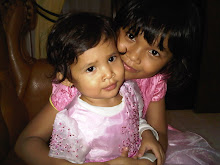Anyone who is vulnerable to AIDS, and almost everyone is vulnerable, unless they know how to protect themselves. It's not only young people, injecting drug users or gay men who become infected - the virus has affected a cross-section of society. This means that education ought to be aimed at all parts of society, not only those groups who are seen as being particularly high-risk. It is all very well to educate young people but it's usually adults who become infected, and in the UK, for example, in recent years there has been very little AIDS education targeted at adults. The people who are most urgently in need of HIV education are those who think they're not at risk.
In 1987 in the UK, a leaflet about AIDS was delivered to every household, and the government also launched a major advertising campaign with the slogan "AIDS: Don't Die of Ignorance" This is an example of non-targeted education, or rather, education with a very broad target, intended to blanket the whole population. To plan an effective AIDS education strategy with smaller sections of the population, it helps to know the characteristics of the group who are to be educated. It is possible to identify four distinct groups of people who require targeted education:
- People who have not yet been educated and may be at risk of becoming infected. This usually means young people, who need to know the risks involved in unsafe sex and drug use before they are old enough to find out for themselves.
- People who have already been educated for whom the education was not effective. If AIDS education were completely effective, there wouldn't be nearly so many new infections. These infections do not only occur amongst young people - many people who have already experienced AIDS education continue to become infected with HIV.
"A few months after we started having unprotected sex, I fell gravely ill. . . I recovered slowly but . . . I guess the warning signs have been there since I fell sick earlier this year, I'm educated on HIV and some of my symptoms literally had the warning bells ringing inside my head. Still, the shock of discovering my status is something I will never wish on my worst enemy." TK, a South African woman
- Everyone needs to learn how and why not to discriminate against positive people. People who are not HIV positive must learn about how the virus is transmitted in order that they are able to protect themselves from infection. At the same time, they must also learn how the virus is not transmitted. People need to know that they cannot become infected from such things as sharing food, towels or toilets. This will help to reduce discrimination against positive people by reducing ignorance and fear.
- People who are already infected also require education. Initially, this must involve an element of counselling and support, and must teach them how about living well with HIV, the tests they may need to have and the medications they may need to take. They must also learn about HIV transmission and safer sex, for two reasons - they need to know how to live positively without passing the virus on to anyone else, and they need to know how to avoid coming into contact with a strain of the virus which differs from the one they are already have.
- The only people who do not fall into one of these groups are those who have received AIDS education, have taken it in, and have the resources to turn knowledge into action. One group who should hopefully fall into this category are AIDS educators. This may seem obvious, but in many cases, teachers may require teaching themselves. They may be called upon to act as AIDS educators when they themselves have little experience or knowledge of the subject. Peer educators must also receive training, even if they themselves are HIV+. Information for teachers and HIV educators can be found here.
If AIDS education that had been done up until now had been fully effective, then there wouldn't have been five million new infections in 2002. It is clear that the campaigns carried out so far have failed to prevent the spread of the virus, so the message needs to be repeated, in different forms, until people appreciate it, or until, hopefully, education is no longer needed.



